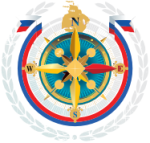East Africa is a diverse region, with considerable European colonial and Arabic influences colliding, and access to both the Red Sea and Indian Oceans. These Christian and Islamic fault lines, together with tribal conflicts, continue to plague the African north-east, and have resulted in significant disruption to global shipping routes and a rise in piracy. Yet on the other hand, East Africa could have a major role to play as a southern extension to the North-South Transportation Corridor if north-east tensions could be eased.
Russia’s role is active in both supporting regional governments in military terms to help the fight against radical extremism, yet at the same time develop trade and infrastructure ties with countries along the East African coast. It is early days, but this region will develop to become more strategically important as Moscow looks to develop its trade and development interests with the Global South.
An important part of this has been the recent Russia-Africa summits, which have been well-received across the African continent. This has rubbed up against older, European colonial-era interests, however it is clear that many African nations view their European ties at best as outdated and at worst as exploitative. Russia has a clean slate in this regard.
Also of interest to Russia are the regional and continental trade agreements that have come into place in Africa. In East Africa this includes the East African Community, (EAS) which includes Burundi, the Democratic Republic of the Congo, Kenya, Rwanda, Somalia, South Sudan, Tanzania and Uganda. The main objective of the EAC is to foster regional economic integration, although progress has been erratic. It is a unified customs union, which makes the ease and cost applications of importing into EAS countries more consistent. This agreement may be useful for Russian manufacturers looking into breaking into these markets – and especially when combined with available free trade and economic zones.
In addition, there is the Common Market for Eastern and Southern Africa (COMESA) which extends from Tunisia (see our Guide to North Africa) to Eswatini (see our Guide to Southern Africa). It includes Djibouti, Eritrea, Ethiopia and Somalia in East Africa, in addition to Egypt, Libya, Sudan and Tunisia in North Africa, the Indian Ocean countries of Comoros, Madagascar, Mauritius and Seychelles, the African Great Lakes nations of Burundi, Kenya, Malawi, Rwanda, Tanzania and Uganda, and the Southern Africa countries of Eswatini, Zambia, Zimbabwe and Central Africa’s Democratic Republic of the Congo. Russian investors interested in East Africa should also take advice on what COMESA can offer in terms of tax advantages.
Finally, the African Continental Free Trade Agreement (AfCFTA) includes all African countries with the sole exception of Eritrea. This unique guide will be of interest to all professionals interested in Russia’s engagement with East Africa.
Please fill the form below to download:


